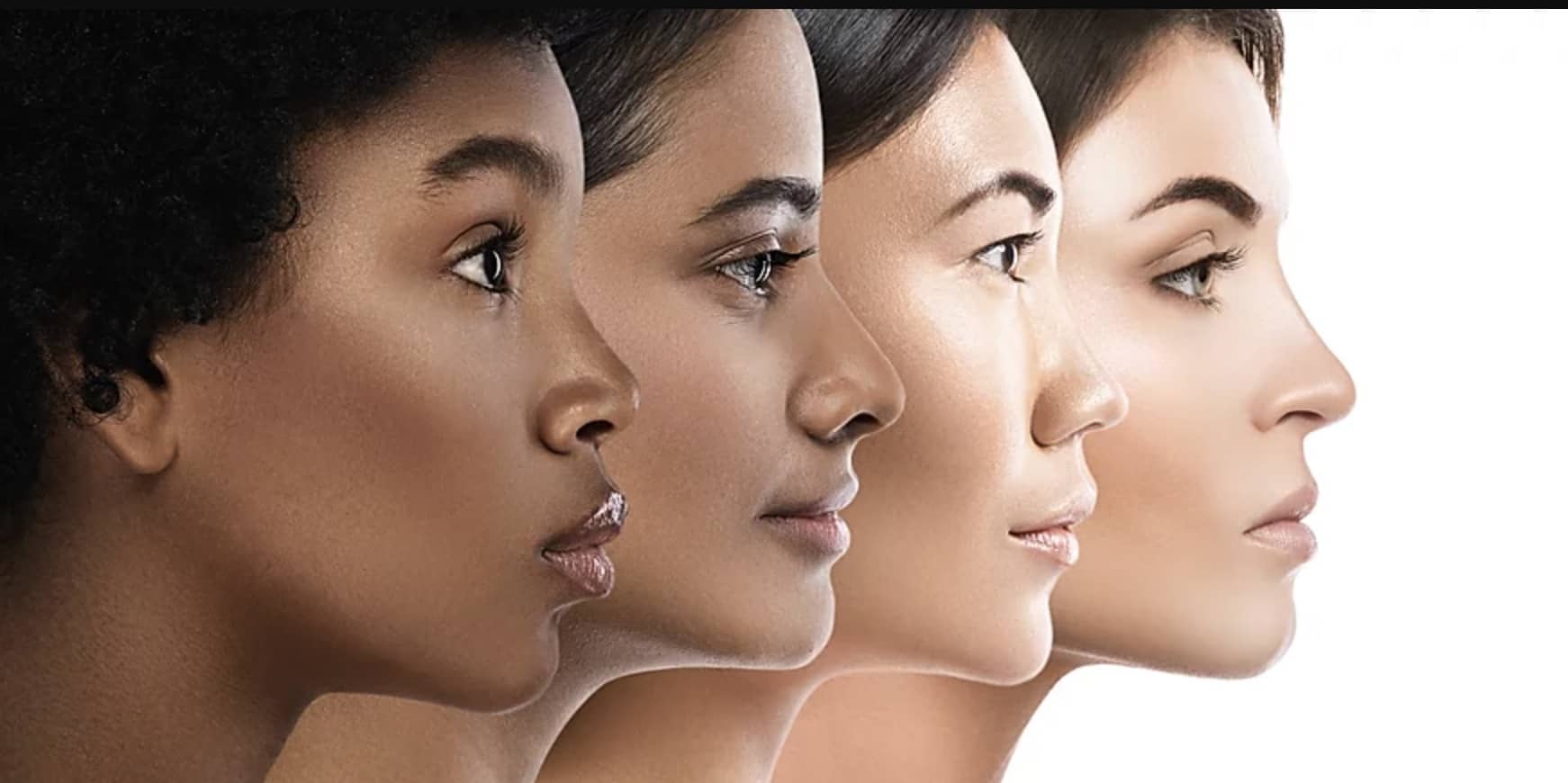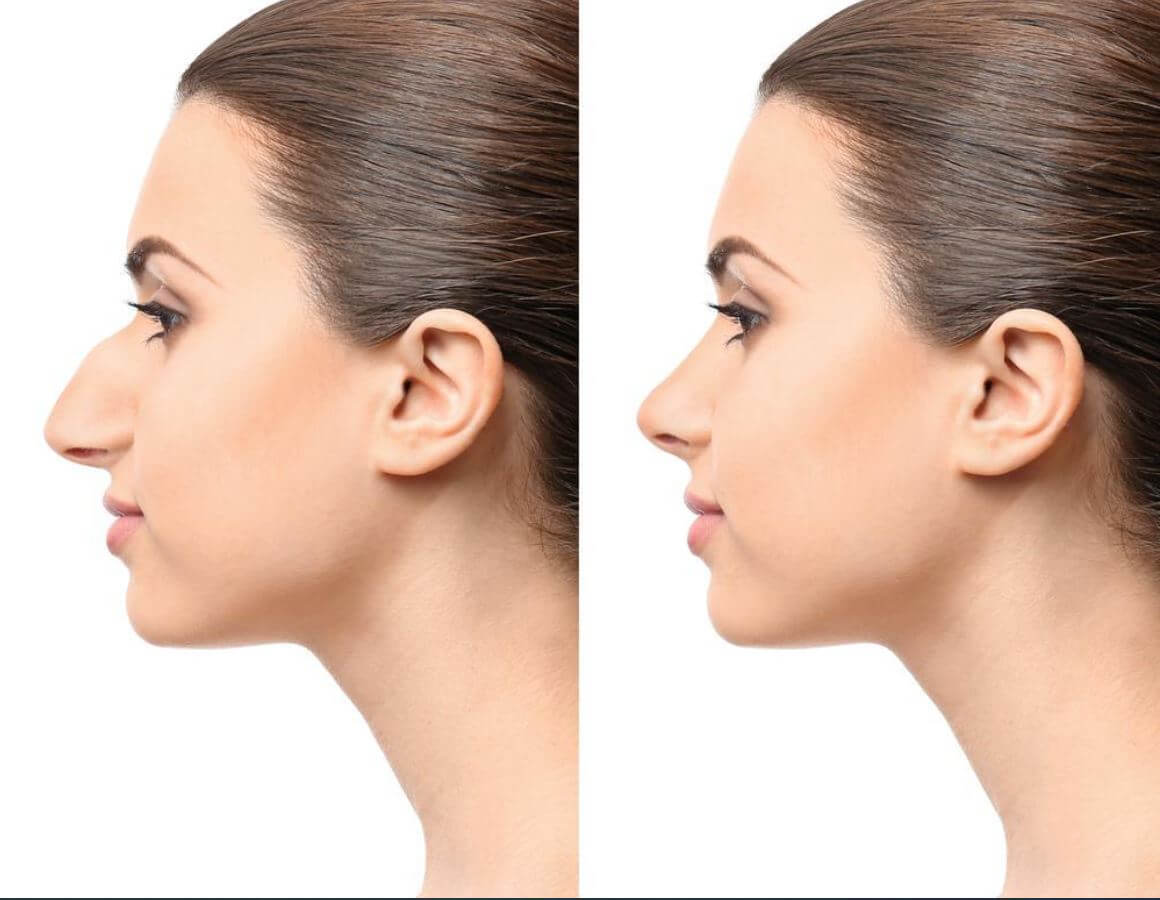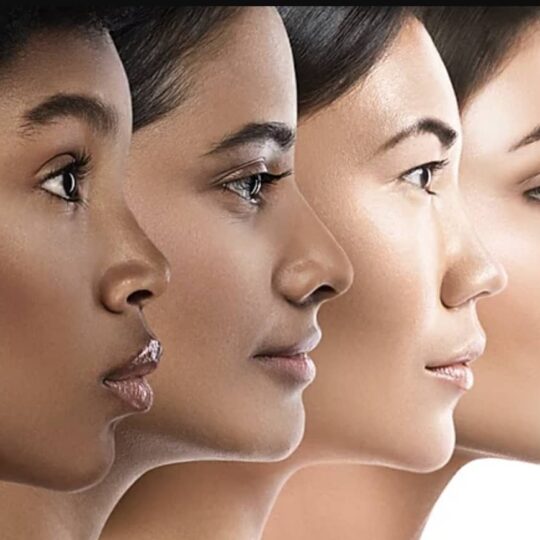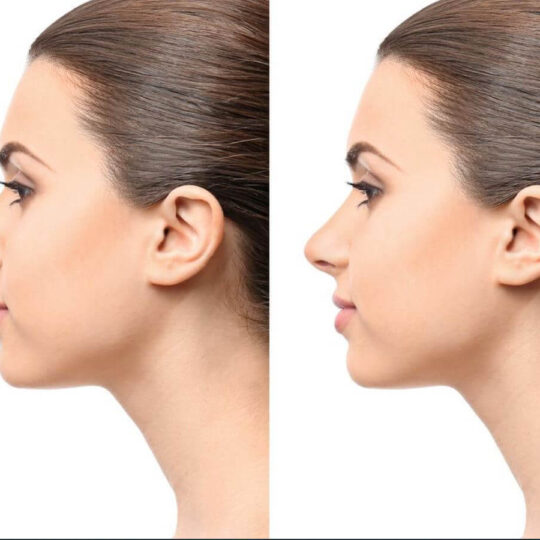Rhinoplasty
What is Rhinoplasty?
Rhinoplasty is one of the most applied surgical procedures in the world. Because the nose is in the middle of the face and makes an effective contribution to the beauty of the face, its internal and external deformities are aesthetically problematic and also cause health problems are corrected. Nose aesthetic operations within the Our Health Group are planned with the approach of keeping the patient’s psychology first in line with the awareness that facial beauty is a whole, without sacrificing comfort in the recovery process.
Rhinoplasty is the name given to aesthetic surgeries implemented to reshape the nose. During these operations, the nose may be enlarged or shrunk; the angle of the nose with the upper lip can be modified; the position of the tip of the nose can be changed or any imperfections as a result of any impacts on the nose or innate aesthetic appearance can be corrected.
During rhinoplasty, the surgeon cuts into the nose or top of the nose using different techniques to gain access to the nose-supporting cartilage and bones. As many incisions, such as lacerations, are usually invisible after the surgery, it is mostly done inside the nose. Depending on the desired result, some bones and cartilages can be removed or tissue can be added (from another part of the body or by using a synthetic filler). After the surgeon arranges and reshapes the bone and cartilage, after they are adjusted according to nose structure, the final adjustments are made. If necessary, a splint may be placed outside the nose to aid in the recovery period to support the newly formed nose structure. The term Rhinoplasty derives from the term “rhinoplastic”, which means “changing the shape of the nose”. The technique involves primarily accessing the nose bone and cartilage support. This is achieved by lacerations made inside the nose, which cannot be seen by us. In some cases, an incision is made in the area of the skin that separates the nostrils. The underlying bone and cartilage are then reduced, increased, or rearranged to form a newly formed structure. For example, if the nose is too large, the surgeon can reduce the size by shaping the cartilage in this area. If the nose bridge is high and lobulated, it can be reduced (rasped) to give a better profile. If any part of the nose looks disproportionately small, cartilage or soft tissue grafts can be placed to better fit the face. The upper lip of the nose or the angles connected with the forehead can also be replaced by further shaping the nose support structure.
The textures are then redrawn on the new frame and the lacerations are covered. A small plastic splint may be applied to the outside of the nose to help minimize swelling and to help protect the new shape while the nose is healing. In the nose, a soft absorbent material, i.e., a bumper, can be used to protect the softness of the dividing wall, called the septum, during air passages. Alternatively, soft nasal supports may be placed to allow post-operative nasal breathing. However, we cannot say all the patients will have the same treatment as it differs for each patient. Even minor corrections to be made on the nose can make a difference in general face concordance.
Most patients report little pain after surgery and any discomfort is easily controlled with mild pain relievers.
Who can have Rhinoplasty?
- Those who suffer from inadequate or lack of breathing, snoring, sleep apnea, etc.
- Those with aesthetic problems in the nose
- Persons who have had an adolescence period with a health problem or a problematic anomaly
- Those who suffer from loss of self-esteem due to aesthetic problems
- Those who are not satisfied with the previous Rhinoplasty
How is Rhinoplasty made?
We show our patients the image they will get after operation by using digital simulation technology in different versions before the nose surgery. In this regard, our patients get the operation without any surprises. Following the clarification of specific nose problems our patients have, we plan the specific technique we will use at our clinics.
Simple Rhinoplasty: Simple Rhinoplasty is a technique that is performed under local anesthesia and applied in a very short period of time within the Our Health Group. Shaping the tip of the nose is an operation that is applied in order to lift the tip of the nose, which has ptosis depending on the gravity of which is innate. This technique, which is applied only by using a rope and without the use of tampons, plaster, and similar apparatuses, ensures that our patients have the most comfortable process after operation.
Rhinoplasty: It is the classic nose surgery that is applied to the structure of the nose which has an arch or has lost its form as a result of any impact. The subject we are most interested in nasal surgery is the age and gender of the patient. It is also aimed that the new nose design should be suitable with total face contour and be made in the frame of a plan designed according to the specific person.
Secondary Rhinoplasty: Revision nose treatments can also be referred to as secondary Rhinoplasty, an operation that we apply to patients who have previously undergone nose surgery. Patients who suffer from sagging on their nose, who do have the nose they desire, and who experience difficulties in breathing or smelling after the recovery period, can have secondary Rhinoplasty.
Essentials of Rhinoplasty
As we have always said, the nose is our organ that also contributes to the beauty of the face. But we especially want to emphasize that the skin, the lips, the eyes, and the hair are the regions that should always remain fresh. For this reason, we have a different perspective for Rhinoplasty when compared with most aesthetic surgery clinics and we think that nose designs should be made specifically for each person and we act accordingly. The face contour and skin structure of each patient are different from each other. If each person would have the same nose type, this would appear as a nice nose that might be incompatible with the face. The nose should be suitable with the eye, the lip structure, and the chin and cheekbones, and the design should be planned in accordance with these.
Although Rhinoplasty can make improvements and surprising changes for many patients; the fact that the structure of the nose changing in a reliable way is very important in order to not cause any new problems for the patient. Accordingly, in addition to the anatomical features such as skin thickness and skeletal size of those who want to have Rhinoplasty; functional constraints and long-term durability should be considered and planning should be done accordingly. Although the patient’s wishes are very important, request for an ultra-thin nose structure and attempts for that may cause complications. For this reason, the patient’s anatomical structure and facial contour line must be examined in accordance with the patient’s needs and request for Rhinoplasty. A neatly reshaped nose with elegant lines and a pleasant contour structure that adapts to it is possible for almost any healthy patient. For this reason, in Rhinoplasty, the whole face must be considered. The aim in Rhinoplasty is to resolve the problems and reach a reshaped structure that is suitable with the face contour and which does not make the aesthetic application obvious.
Computer display
Rather than complex Rhinoplasty, we always put the functionality upfront and want the rhinoplasty to be harmonized with the whole face. You can see the new nose structure created with 3D digital simulation in Our clinics, and you can examine the ultimate end result computerized imaging of your nose after operation.
Rhinoplasty anesthesia techniques and admission
Rhinoplasty can be applied with general or local anesthesia. 1 night of accommodation at the center of operation will be necessary. This process can be longer or shorter, depending on the technique of Rhinoplasty applied.
Post Rhinoplasty application
According to the interventions made in the nose, the splints and bandages around the nose will be removed within about one week. Currently, most Rhinoplasty operations are performed without using such apparatuses. You may feel your face swollen, or you may observe reddening and bruises for a few days around your eyes and nose. The cold compresses recommended by your physician can be applied and they will help you to relieve the swell and pain. Your doctor may also recommend pain relief medicines, but you should follow the recommendations and not do anything which is not recommended. During the first few days after surgery, you may need to keep your head up and relatively stable while you are sleeping. It can take a few weeks to get back to the tiresome activities.
Depending on the Rhinoplasty technique and your build, it is very natural if you feel swelling, bruise, and pain. The problems such as edema and bruises on your nose will be removed fast and gradually. You can start re-engaging in your social life within 1 week. In cases of Simple Rhinoplasty, it is possible to return to social life immediately. In this period, you must protect your nose from the sun’s harmful rays and the impacts caused by external factors. Wearing wide collar clothes and wide hats will make it easier for you. We advise you to wear lenses instead of using glasses and be very careful while entering the sea or pool. After the Rhinoplasty, your new nose shape may settle within 6 months. We, therefore, recommend that you be patient to see the final result and inform your doctor of possible improvements throughout the process.
Tampon and plaster
Plaster and tampons, which allow a healthy recovery of Rhinoplasty in full, are at the top of fear subjects for most patients. Today, we want to remind you that breathing is much more comfortable with perforated tampons. Also, the tampons placed in your nose are removed painlessly after 1 or 2 days, and the plaster is removed after 1 week on average.
Why should you have Rhinoplasty?
Rhinoplasty can change the size, shape and angle of your nose and can make it proportional with the rest of your face. It can also correct structural problems that lead to chronic obstruction and breathing problems. The results of rhinoplasty will vary depending on what kind of correction you want. It is important that you and your plastic surgeon agree on the purpose of the operation. If your expectations are realistic and your plastic surgeon shares them, you will probably get the results you want. Why should you have Rhinoplasty? The answer to this question is a process that is completely up to you. If you have a health-related problem such as a breathing problem and you need to have a Rhinoplasty, or if your nose does not satisfy you aesthetically and causes concern, you should make a decision and discuss it with an aesthetic surgeon and experience the final result.
- Category
- Face






